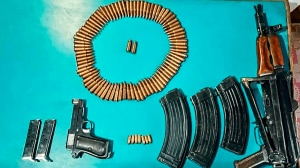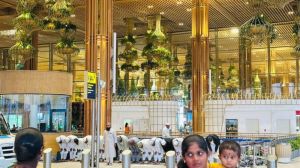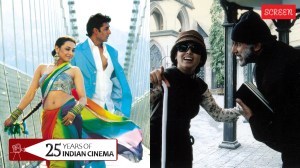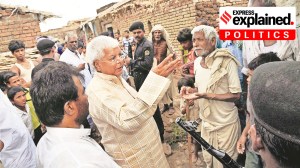Loss of Caesium-137 leads AERB to tighten safety measures in cancer hospitals
MUMBAI, AUG 21: Following the loss of the radiation source from Mehdi Nawaz Jung (MNJ) Cancer Hospital at Hyderabad, the Atomic Energy Reg...

MUMBAI, AUG 21: Following the loss of the radiation source from Mehdi Nawaz Jung (MNJ) Cancer Hospital at Hyderabad, the Atomic Energy Regulatory Board (AERB) has decided to tighten procedural measures of safety in all the 68 hospitals in the country owning such sources. This was stated by Dr K S Parthasarathy, secretary AERB, in a written response to The Indian Express, with respect to loss of the caesium-137 source.
Ruling out the possibility of theft since the source does not have any significant misuse-potential, Parthasarathy, however, admitted that the lost source may never be found.
“The scientists of the Bhabha Atomic Research Centre (BARC) and AERB and medical physicists of the hospital have thoroughly searched all possible locations in which the source must have fallen with the help of very sensitive radiating detecting instruments. The locations included hospital premises, drainages, roads leading away from the hospital, garbage dumps etc. The instruments used are capable of finding out extremely low radiation levels. The surveys assured us that the source is unlikely to be present in any of the areas and in those context poses insignificant risks. In the light of the experience, it is our considered view that the source must have gone under several inches of soil. Otherwise, we could have located it easily,” Parthasarathy said.
Parthasarathy said that their investigation revealed procedural lapses which needed “urgent correction”. He said that in industrial institutions the AERB often conducted unannounced inspections because they were handling sources of greater strength. Such inspections had hitherto been “very few” in hospitals. The AERB now proposes to subject all the hospitals to such unannounced inspections. “If serious lapses are observed in hospitals,” Parthasarathy added, “AERB shall take appropriate restrictive actions.”
Dwelling on the lost caesium-137 source and why the loss could not be of any serious radiation-hazard, Parthasarathy said, “The missing source capsule has a length of 18mm containing two radiaoactive seeds’ of length 5mm each, a ceremic spacer of 4.5 mm and a closing part of 3 mm. The diameter of the capsule is 3 mm. The radioactive material is in the form of special glass into which caesium-137 is incorporated. One of the special advantage of this form of source material is that the radioactive material is virtually non-leachable.”
Moreover, the radioactive seed’ has a special heavy metal cover of 0.1 mm. Two such seeds, explained Parthasarathy, are further covered on all sides with a stainless steel sheeth of 0.5 mm.
Yet, as a matter of abundant caution, the AERB has rated this incident at level 2 in a scale of 0 to 7 in the international nuclear events scale and has also reported the matter to the International Atomic Energy Commission. Parthasarathy says that putting the incident at level two is an acknowledgement that “significant failure of safety provisions” occurred, and the AERB has taken steps to remove the lacunae involved.
Pathasarathy points out that radium had been extensively used in India for the past decades despite the fact that radium is not a desirable source as it decays into a gas. He points out that physicians used to insert the tubes into the uterus with bare hands. The AERB had acted to see that all the radium was substituted by safer radiation sources like caesium-137. The BARC had assisted hospitals owning radium to dispose it off safely without charge.This, according to Parthasarathy, demonstrates the commitment of the AERB to ensure safe use of radioactive sources in hospitals.



- 01
- 02
- 03
- 04
- 05




























